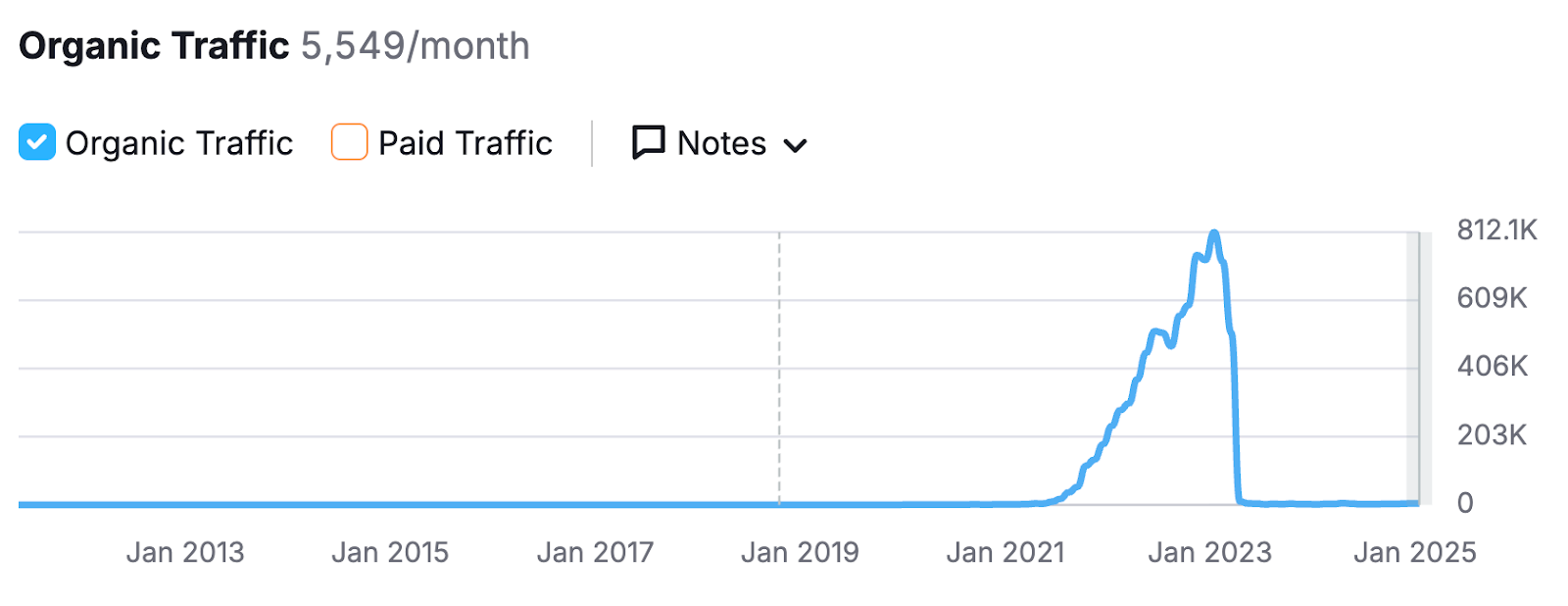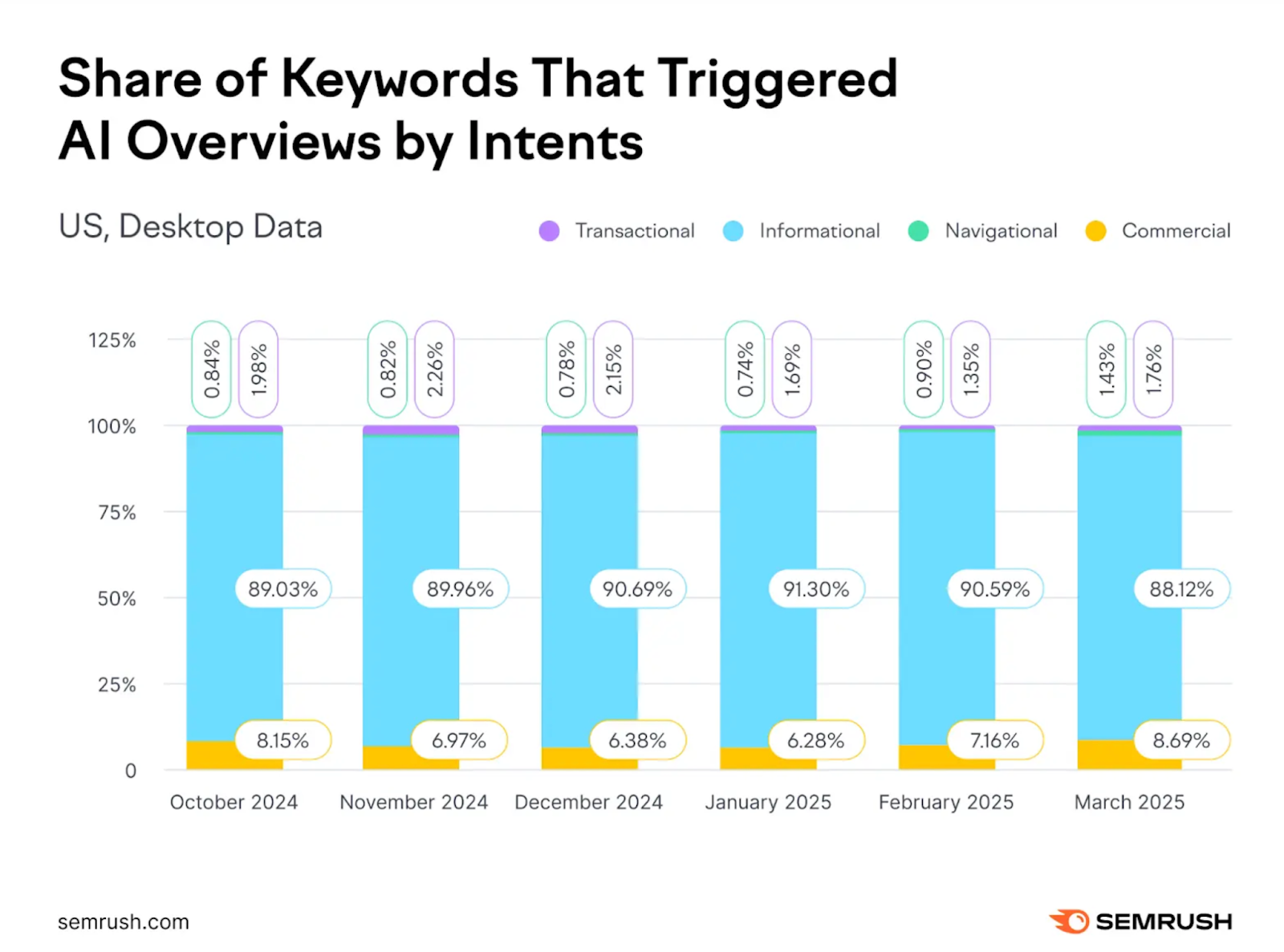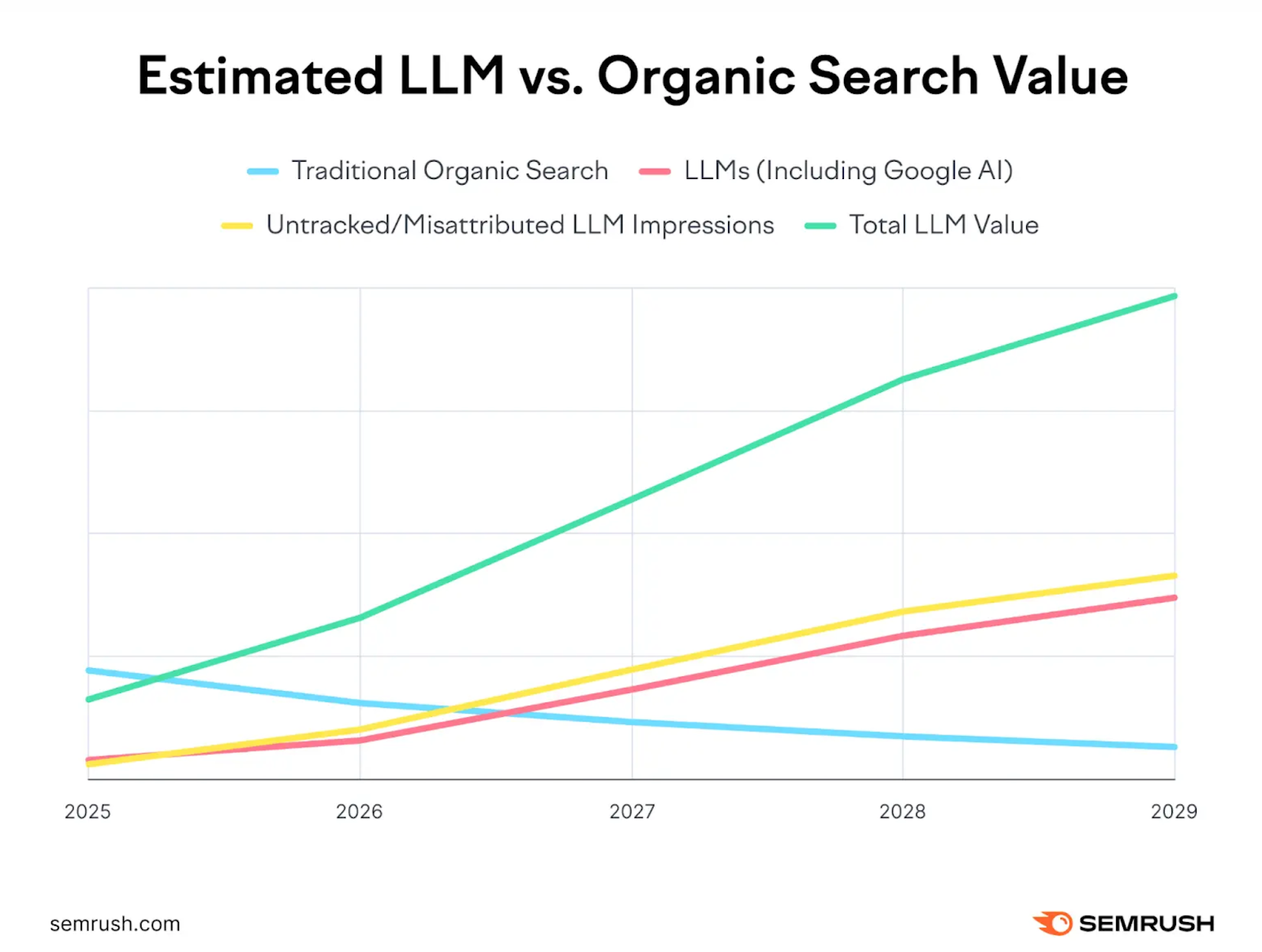Forget the Great Decoupling – SEO’s Great Normalization has begun

For years, SEO success was measured by charts pointing up and to the right.
We celebrated traffic spikes, shared screenshots, and treated rising sessions as proof of strategy.
But those days are gone.
The Great Decoupling represents the decline of informational traffic
The SEO playbook that was glorified for the last 10 years prioritized generating useless hordes of informational traffic.
Marketing teams and agencies alike bamboozled executives by pumping up traffic numbers to obscene levels.
People on LinkedIn celebrated programmatic SEO case studies and “SEO heists” that racked up irrelevant clicks – encouraging copycat behavior that ultimately led to the further enshittification of our beloved SEO profession.
Here’s the aftermath of the SEO heist:

In 2024, Google escalated its war on generic, low-value content marketing by deploying AI Overviews and updating its algorithm to target scaled content abuse.
The Great Normalization is here
It turns out that impressions were inflated all along thanks to SEO tool scraping.

But we can’t blame it all on SEO tool scraping.
The B2B SEO playbook became a cookie-cutter formulaic bastardization of HubSpot’s inbound marketing model, which encouraged the prioritization of high-volume definitional search terms, often via glossary pages and FAQ directories.
That’s why if you examine any Cybersecurity company, they all have the same SEO strategy.
And let’s be real: most websites never deserved those clicks in the first place.
They were either topically irrelevant or played a questionable role in influencing conversions.
Real-world examples of the top-of-funnel collapse
A B2B cybertech client saw a 70% drop in traffic to its glossary pages.

A martech company experienced a similar 70% decline in its FAQ content.

A business operations brand lost around 60% of visits to its definitions section.

And a B2B data operations client reported a 55% decrease in glossary traffic.

AI is the great equalizer
Top-of-funnel clicks are being eaten alive due to AI’s ability to easily summarize consensus information based on its own training data, driving even more zero-click searches.
Because so many categories are topically mature, ChatGPT, Claude, Gemini, etc., have already scraped the answers to most generic queries, which are pre-loaded in their index of training data.
For pre-loaded AI answers that don’t involve LLM grounding, there’s no chance of getting your brand recommended, and no chance of earning a citation.
AI Overviews targeting informational queries are simply a continuation of what we previously saw with featured snippets and People Also Ask boxes, reducing traffic opportunities.

Get the newsletter search marketers rely on.
See terms.
Why educational blogs no longer work in the AI era
Across dozens of GSC accounts, the trend is clear – educational blogging as a marketing strategy has stopped delivering results.
Top-of-funnel informational pages have become irrelevant
These clicks rarely influenced conversions and now account for most traffic losses.
Companies that have pumped up vanity traffic are paying the price.
Middle-of-funnel content remains valuable
Pages comparing solutions or providing evaluation content still attract users who are actively considering purchases.
Optimizing for AI-driven search and grounded prompts still pays off.
Bottom-of-funnel intent is critical
High-intent queries like “best insider threat platforms” require citations and grounded answers.
AI cannot fully replace these pages, making them high-value for organic search and revenue attribution.
Branded content holds strong
Homepage traffic is rising in the AI era, Siege Media found.
Companies that invest in reputation, commercial intent content marketing, and ecosystem management will maintain visibility, even as AI-generated answers dominate consensus topics.
AI is changing metrics and measurement
Prompt monitoring in AI search is quickly becoming the new keyword rank tracking.
- Irrelevant prompts tracking generic AI answers without citations or brand mentions are useless.
- Only prompts requiring LLM grounding or real-time references are worth monitoring.
This shift is the next evolution beyond the Great Decoupling: it’s the Great Normalization where top-of-funnel traffic is rapidly declining, and brands are forced to compete with a lower inventory of available clicks but more meaningful engagement from higher intent searches.
A recent study by Semrush found that:
- “AI search visitors tend to convert better because LLMs can equip users with all the information they need to make a decision.”

Actionable ideas
Here’s how to adapt your SEO strategy for the Great Normalization – and focus on metrics that truly reflect impact.
- Avoid chasing top-of-funnel traffic: Focus on bottom-of-funnel, branded, and middle-of-funnel content that influences conversions.
- Invest in AI-optimized content: Target queries requiring LLM grounding, citations, and brand mentions. Use GSC and Semrush to track meaningful AI SEO metrics.
- Measure what matters: Track organic search, attribution, and performance of grounded prompts. Ignore vanity impressions and outdated rankings.
- Diversify channels: Don’t rely solely on organic search. Integrate LinkedIn, YouTube, webinars, social media advertising, and ecosystem visibility to hedge against zero-click searches and AI dominance.
Embrace the Great Normalization
The Great SEO Normalization is a much needed strategic correction.
Top-of-funnel clicks are disappearing, but branded traffic, middle-and bottom-of-funnel optimization matter more than ever.
Companies that adapt their SEO strategy to this new reality will thrive.
Focus on what influences conversions and embrace a new era where traditional search and AI search coexist.







Recent Comments